This was my first ever attendance of the Dayton Hamvention and it was an awesome experience.
I began planning the trip back in February and thought it would be great to attend as well as convince my dad to come out from California so we could enjoy it together, as he had never attended either. Due to commitments at school, I could not get to Dayton until Friday in the late afternoon, too late to take advantage of the opening day. As I drove my rental car away from the airport, I started to see all the ham-laden vehicles, dripping with antennas and sporting callsign license plates. Linking up with my dad at the hotel, we headed to Smokey Bones for dinner and a chance to strategize our plan for Saturday.
Our hotel rooms included the free breakfast (which was actually pretty good) and started serving at 7am. We quickly polished off our meals and headed to the shuttle bus parking lot at the old Salemn Mall behind Sears. Arriving at 7:30am, only a few dozens cars had filled the parking lot, but a line off modern green city transit buses awaited eager hams looking to make their way to Hara Arena. I’d ordered both of our tickets and bus passes ahead of time and we proceeded to the first bus in line with our Hamvention programs. Flipping through I eyed the forum’s listing and saw that my name was there for my presentation on the history of the Army Amateur Radio System. I hadn’t told my dad I was presenting, so I asked him to look on page 43 and tell me if that program looked interesting. His eyes got a bit big and he said, “That’s you! No wonder you were interested in attending the MARS forum.” I was glad I was able to pull off my surprise.

The bus dropped us off at the entrance to the flea market with about 20 minutes prior to the gate opening. I was immediately struck by the massive size of this event, the hard planning that went into its orchestration, and the army of folks running it. Through my entire experience at the Hamvention, those individuals who made everything happen were professional, competent, and made the entire visit that much better.
 As we made our way into the flea market, the hardest decision became where to start. We began wandering around the various rows taking in the immensity of the outside vendors. A few of the stalls actually resembled my basement collection of radio gear and I was reminded once again I need to complete some long delayed Spring cleaning. I wasn’t in the market for anything, I just wanted to poke around and see what was there. I truly believe that if what you need isn’t being sold at the flea market, then you probably don’t need it. I also have an idea for a kind of amateur radio triathlon. It would work as follows: (1) Interested hams would be presented schematics for a monoband HF transceiver once they arrived at the flea market entrance, which would start their time; (2) The hams would then have scour the flea market for all the requisite pieces and parts (including an antenna); (3) Next, the hams would assemble their rigs a solder station tent; (4) … and then move to an open area to erect their antenna and make a contact; (4) Scores would be determined for speed in accumulation of parts and building, least amount of money spent for parts, and the overall aesthetic presentation of the rig built. There would have to be different classes of competitors: those moving under the power of their own two legs, the scooter crowd, and the golf cart folks.
As we made our way into the flea market, the hardest decision became where to start. We began wandering around the various rows taking in the immensity of the outside vendors. A few of the stalls actually resembled my basement collection of radio gear and I was reminded once again I need to complete some long delayed Spring cleaning. I wasn’t in the market for anything, I just wanted to poke around and see what was there. I truly believe that if what you need isn’t being sold at the flea market, then you probably don’t need it. I also have an idea for a kind of amateur radio triathlon. It would work as follows: (1) Interested hams would be presented schematics for a monoband HF transceiver once they arrived at the flea market entrance, which would start their time; (2) The hams would then have scour the flea market for all the requisite pieces and parts (including an antenna); (3) Next, the hams would assemble their rigs a solder station tent; (4) … and then move to an open area to erect their antenna and make a contact; (4) Scores would be determined for speed in accumulation of parts and building, least amount of money spent for parts, and the overall aesthetic presentation of the rig built. There would have to be different classes of competitors: those moving under the power of their own two legs, the scooter crowd, and the golf cart folks.
After getting a feel for the flea market, we headed for the main indoor arena to see what was what. The place was packed and it was hard to move around.

We soon moved to one of the side halls and began to cruise the indoor vendors. The Begali stall, in my opinion, was the coolest. Elecraft was packed three deep. Dad had to rest his heels for a bit while I cruised around and saw the Wire Man, Davis Instruments, the ARRL’s spread, Tarheel, and even the Linux in the Ham Shack folks… who were also swarmed with folks. Dad needed a breather and it sounded like a good opportunity for lunch. As a forum speaker, I got a parking pass for the front lot, so with a quick ride to back on the shuttle, I was able to retrieve the rental car, pick up Dad, and head out for lunch. For me, the Hamvention was a marathon, not a sprint… so we were setting a good pace.
After lunch, I was able to change into a bit more respectable clothes for my upcoming forum presentation back at the hotel and then we headed back, taking advantage of the parking pass access to the front lot. On our way back in we passed the HFPack crowd, sporting their radios and posing for pics. What a great looking group!

Prior to the MARS forum was a gentleman talking about his SSTV setup. Incredible! He operates SSTV while mobile with an elaborate setup that combines APRS with SSTV. His entire installation was top notch and extremely professional.
 The MARS forum was well attended. MAJ Ron Jakubowski chaired the event and it began with an overview by each of the services MARS chief. I then had the opportunity to give my presentation on the history of the Army Amateur Radio System. I was followed by Jim Aylward who gave an awesome brief on how MARS can best posture itself for its future role of providing emergency communications. He also gave an excellent overview of his Go Kit and had some great overall suggestions for tips and techniques to use in the field. After the forum I had the opportunity to talk with some of the audience and then I turned and saw Jeff Hammer! I’d last seen Jeff in Taji, Iraq in 2008 as I was packing up to head home and he was just arriving. I handed over to Jeff the Baghdad Amateur Radio Society’s footlocker of equipment and my Cushcraft MA5B mini-beam. Jeff is a true MARS professional, having set up the first MARS station in Afghanistan back in 2004. After I left Iraq, Jeff continued to push the capabilities of MARS in Iraq as well as showing some of his fellow soldiers the excitement of operating a DX station on the amateur bands.
The MARS forum was well attended. MAJ Ron Jakubowski chaired the event and it began with an overview by each of the services MARS chief. I then had the opportunity to give my presentation on the history of the Army Amateur Radio System. I was followed by Jim Aylward who gave an awesome brief on how MARS can best posture itself for its future role of providing emergency communications. He also gave an excellent overview of his Go Kit and had some great overall suggestions for tips and techniques to use in the field. After the forum I had the opportunity to talk with some of the audience and then I turned and saw Jeff Hammer! I’d last seen Jeff in Taji, Iraq in 2008 as I was packing up to head home and he was just arriving. I handed over to Jeff the Baghdad Amateur Radio Society’s footlocker of equipment and my Cushcraft MA5B mini-beam. Jeff is a true MARS professional, having set up the first MARS station in Afghanistan back in 2004. After I left Iraq, Jeff continued to push the capabilities of MARS in Iraq as well as showing some of his fellow soldiers the excitement of operating a DX station on the amateur bands.
After the forums for Saturday, Hara started to clear out and my dad and I followed suit. We enjoyed a nice dinner at the Olive Garden near our hotel and then settled down for a good night’s sleep.
Sunday morning we were up, breakfasted, checked-out, and back in action. I cruised what was left of the outdoor flea market. There really wasn’t too much left but I enjoyed poking around what was there. I picked up an old Signal Corps field manual covering techniques for field operations that looked interesting. Then I saw the 2600 van!  A gentleman nearby said that they had been selling a high-end energy drink and he observed that the 2600 guys were pretty weird looking – which is saying something for the hamvention crowd. On Sunday, those who were scooter-bound seemed to obey no speed limits as they used the thinning of crowds to dart from seller to seller.
A gentleman nearby said that they had been selling a high-end energy drink and he observed that the 2600 guys were pretty weird looking – which is saying something for the hamvention crowd. On Sunday, those who were scooter-bound seemed to obey no speed limits as they used the thinning of crowds to dart from seller to seller.

At 9:00am I moved inside. The crowds were much thinner and I could actually move around. My dad headed to the forums to hear Dan Van Hoy talk about his adventures of hamming in Hong Kong. I hit the main arena: Icom, Kenwood, MFJ, Buddipole, and Idiom Press were my favorites. Buddipole was selling a book by B. Scott Andersen, NE1RD on his use of the Buddipole in pursuit of his 100lbs DXpeditions. Kenwood had a D710 hooked up and I was able to see my APRS icon (I was walking around with my VX-8GR strapped to my backpack, emitting a low-watt APRS beacon).

Over in the side hall I was finally able to get close to Elecraft. I talked to the Turbo Tuner guy about a few problems I’ve been having with my mobile ops. I picked up my obligatory free Yaesu ball cap and took in their impressive display of rigs. I bought the Wireman’s book, which is a treasure trove of knowledge. From the ARRL area, I scored a 2010 Hamvention button and saw that they were starting to tear stuff down. I got to talk to the Linux in the Ham Shack guru Richard, K5TUX.

Over in the adjacent hall was Pietro Begali, I2RTF, and his daughter with perhaps the coolest booth. Pietro was chatting with everybody and having a great time.

I made my way back to the forum rooms and found my dad as well as catching the end of Dan Van Hoy’s adventures in Hong Kong. When he was complete, we worked our way to room number one to hear Jim Stafford, W4QO, Wes Lamboley, W3WL and Hal Kennedy, N4GG. These gentlemen had, far and away, the coolest presentation at the hamvention. They had a spark gap transmitter! That actually worked! Before the team demonstrated the transmitter, they gave a great brief on the early history of amateur radio. Then they truly electrified the crowd with “Blue Lightening”, the spark gap device. At the end, they allowed folks from the audience to come up and send their calls – but only after a long safety brief.

And that was it. We had a nice lunch and made our way to the Dayton Airport to head back home.
Overall – What an experience! My dad and I had a wonderful time. I don’t know when conditions will allow me to attend again, but I hope it is soon. If you have never been, I encourage you to go next year. Just to take in the sights, it is worth the trip.


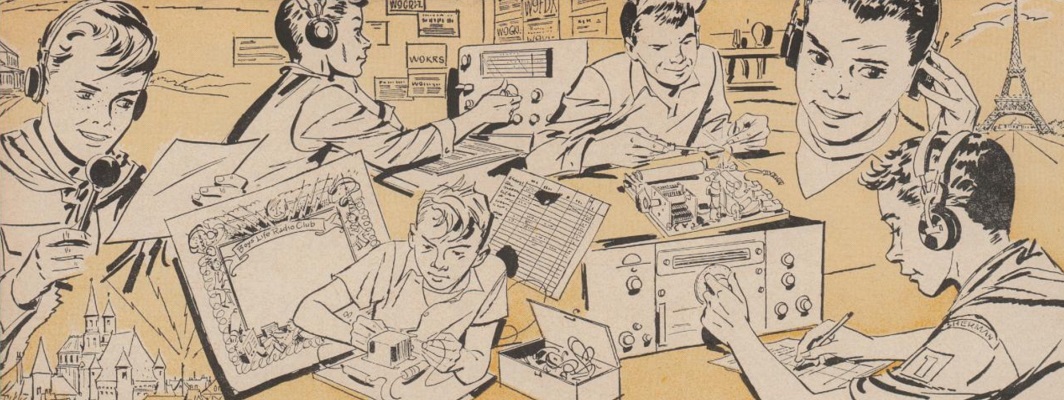



 I have been here in Korea for just over two weeks and am settling in at
I have been here in Korea for just over two weeks and am settling in at 



 As we made our way into the flea market, the hardest decision became where to start. We began wandering around the various rows taking in the immensity of the outside vendors. A few of the stalls actually resembled my basement collection of radio gear and I was reminded once again I need to complete some long delayed Spring cleaning. I wasn’t in the market for anything, I just wanted to poke around and see what was there. I truly believe that if what you need isn’t being sold at the flea market, then you probably don’t need it. I also have an idea for a kind of amateur radio triathlon. It would work as follows: (1) Interested hams would be presented schematics for a monoband HF transceiver once they arrived at the flea market entrance, which would start their time; (2) The hams would then have scour the flea market for all the requisite pieces and parts (including an antenna); (3) Next, the hams would assemble their rigs a solder station tent; (4) … and then move to an open area to erect their antenna and make a contact; (4) Scores would be determined for speed in accumulation of parts and building, least amount of money spent for parts, and the overall aesthetic presentation of the rig built. There would have to be different classes of competitors: those moving under the power of their own two legs, the scooter crowd, and the golf cart folks.
As we made our way into the flea market, the hardest decision became where to start. We began wandering around the various rows taking in the immensity of the outside vendors. A few of the stalls actually resembled my basement collection of radio gear and I was reminded once again I need to complete some long delayed Spring cleaning. I wasn’t in the market for anything, I just wanted to poke around and see what was there. I truly believe that if what you need isn’t being sold at the flea market, then you probably don’t need it. I also have an idea for a kind of amateur radio triathlon. It would work as follows: (1) Interested hams would be presented schematics for a monoband HF transceiver once they arrived at the flea market entrance, which would start their time; (2) The hams would then have scour the flea market for all the requisite pieces and parts (including an antenna); (3) Next, the hams would assemble their rigs a solder station tent; (4) … and then move to an open area to erect their antenna and make a contact; (4) Scores would be determined for speed in accumulation of parts and building, least amount of money spent for parts, and the overall aesthetic presentation of the rig built. There would have to be different classes of competitors: those moving under the power of their own two legs, the scooter crowd, and the golf cart folks.

 The MARS forum was well attended. MAJ Ron Jakubowski chaired the event and it began with an overview by each of the services MARS chief. I then had the opportunity to give my presentation on the history of the Army Amateur Radio System. I was followed by Jim Aylward who gave an awesome brief on how MARS can best posture itself for its future role of providing emergency communications. He also gave an excellent overview of his Go Kit and had some great overall suggestions for tips and techniques to use in the field. After the forum I had the opportunity to talk with some of the audience and then I turned and saw Jeff Hammer! I’d last seen Jeff in Taji, Iraq in 2008 as I was packing up to head home and he was just arriving. I
The MARS forum was well attended. MAJ Ron Jakubowski chaired the event and it began with an overview by each of the services MARS chief. I then had the opportunity to give my presentation on the history of the Army Amateur Radio System. I was followed by Jim Aylward who gave an awesome brief on how MARS can best posture itself for its future role of providing emergency communications. He also gave an excellent overview of his Go Kit and had some great overall suggestions for tips and techniques to use in the field. After the forum I had the opportunity to talk with some of the audience and then I turned and saw Jeff Hammer! I’d last seen Jeff in Taji, Iraq in 2008 as I was packing up to head home and he was just arriving. I  A gentleman nearby said that they had been selling a high-end energy drink and he observed that the 2600 guys were pretty weird looking – which is saying something for the hamvention crowd. On Sunday, those who were scooter-bound seemed to obey no speed limits as they used the thinning of crowds to dart from seller to seller.
A gentleman nearby said that they had been selling a high-end energy drink and he observed that the 2600 guys were pretty weird looking – which is saying something for the hamvention crowd. On Sunday, those who were scooter-bound seemed to obey no speed limits as they used the thinning of crowds to dart from seller to seller.


















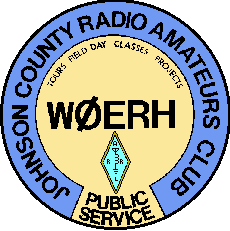 Last night I attended a meeting at the
Last night I attended a meeting at the 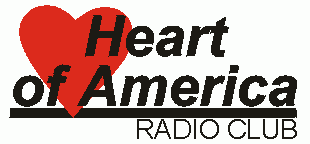 On Tuesday I attended the meeting of the
On Tuesday I attended the meeting of the 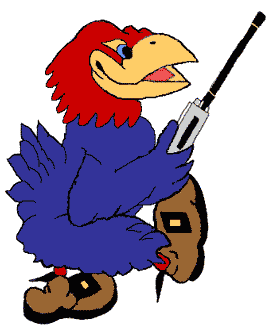 Thursday night I was out at the
Thursday night I was out at the 
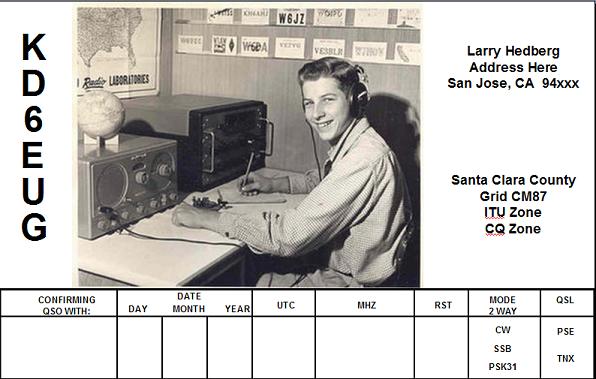
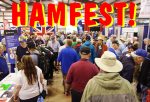 I went to the
I went to the  Yesterday, the weather was great and I got a chance to take my daughter out on a bicycle ride again. Wanting to improve the TX capability of my bike-mounted TH-D7A for APRS, I built an
Yesterday, the weather was great and I got a chance to take my daughter out on a bicycle ride again. Wanting to improve the TX capability of my bike-mounted TH-D7A for APRS, I built an